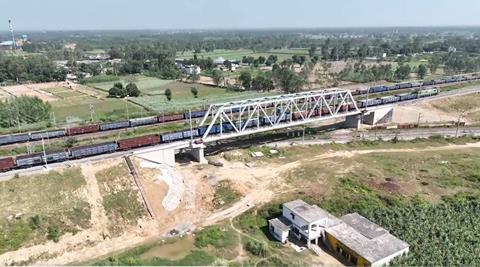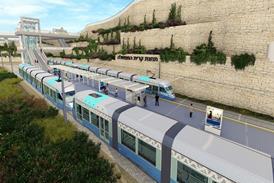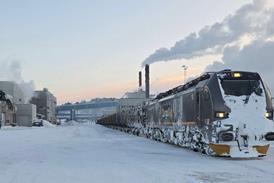
INDIA: Indian Railways has completed construction of the 1 337 km Eastern Dedicated Freight Corridor linking Ludhiana in the state of Punjab to Sonnagar in Bihar, enabling it to operate freight trains with heavier trailing loads at higher average speeds.
Announcing that commercial services on the final section of the route would begin on November 1, Managing Director of Dedicated Freight Corridor Corp of India Ltd R K Jain said on October 13 that ‘the first section of EDFC was inaugurated in December 2020 and we have completed the entire corridor in three years’.
The first freight train trial with electric traction from EDFC’s New Sahnewal (Ludhiana) – to New Khurja (401 Km) via New Khatauli on 11.10.2023 is a landmark achievement marking the completion of the entire EDFC of 1337 km. pic.twitter.com/GXNzgGH22R
— DFCCIL (@dfccil_india) October 11, 2023
The first electrically-hauled freight train on the 401 km section from New Sahnewal in Ludhiana to New Khurja via New Khatauli in Uttar Pradesh ran on October 11, he reported.
The design speed of the Eastern DFC is 100 km/h, and IR anticipates that the use of high-performance electric locomotives will enable trains of up to 1 000 m to complete the 1 337 km journey within 24 h, at an average speed of 50 to 60 km/h. This is more than twice the average speed of freight trains using IR’s existing network, which is currently around 25 km/h.
Freight trains from Sonnagar to Dadri near Delhi, using the congested Delhi – Kolkata main line via Deendayal (Mughalsarai), have typically been taking 35 to 50 h; this journey is now expected to be completed in 18 to 20 h.
‘The entire corridor becoming operational will specially benefit the thermal power plants in Uttar Pradesh, Punjab, Haryana and parts of Rajasthan as it will cater largely to coal traffic’, Jain explained.
Senior DFCCIL executives told Railway Gazette International that around 140 trains per day are operating on the sections of the Eastern DFC that have already been commissioned, while the completed corridor will have capacity for 250 trains/day. Initial projections envisaged that the line would transport around 153 million tonnes of freight in 2021-22; the corridor is now expected to be carrying about 250 million tonnes per year by 2036-37.
The insiders confirmed that that there had been a cost and time over-run in building the line. The eastern section of the route now being completed represents an investment of Rs550bn, but was delayed by more than five years for a variety of reasons, mainly land acquisition and changes to the scope of work.
A budget of Rs814·6bn was approved by the government in 2015 for construction of the two DFCs, but this has since been increased by 54% to Rs1·24tr. The latest revision includes Rs1·02tn for construction and other costs, and Rs 218·5bn for land acquisition. DFCCIL now anticipates that around 95% of the Western DFC linking Delhi with Jawaharlal Nehru Port in Mumbai will be operational by March 2024.

















